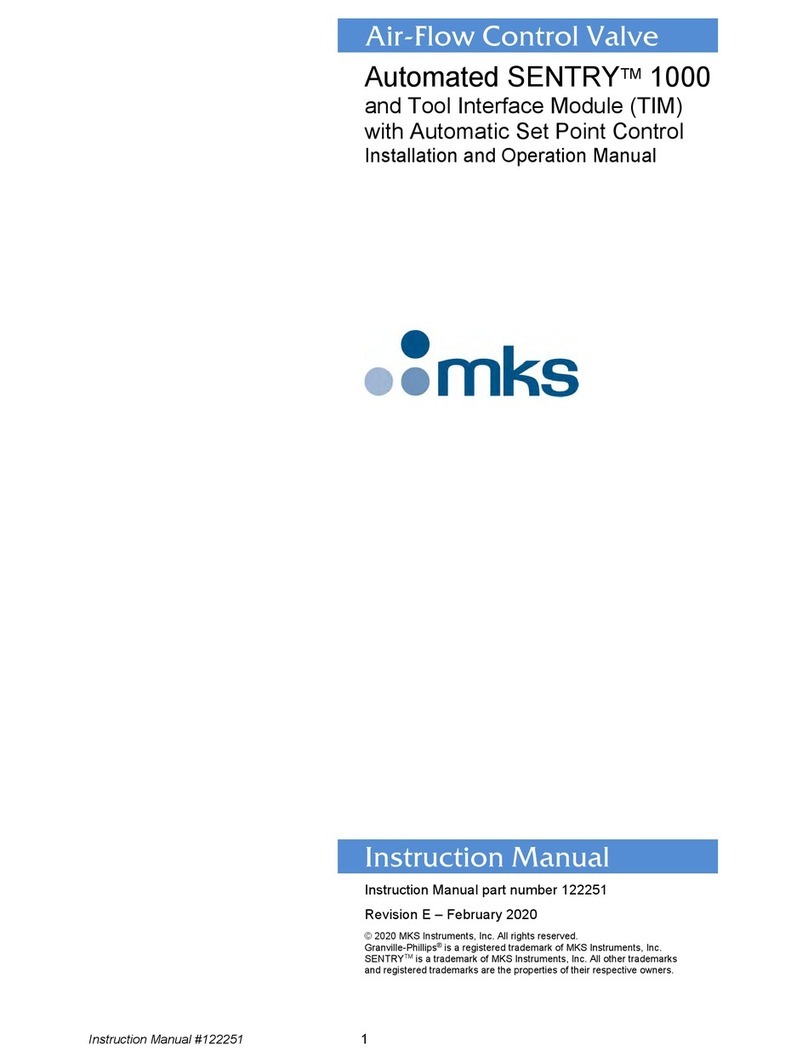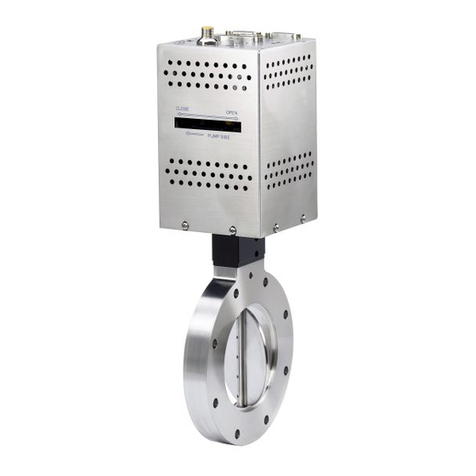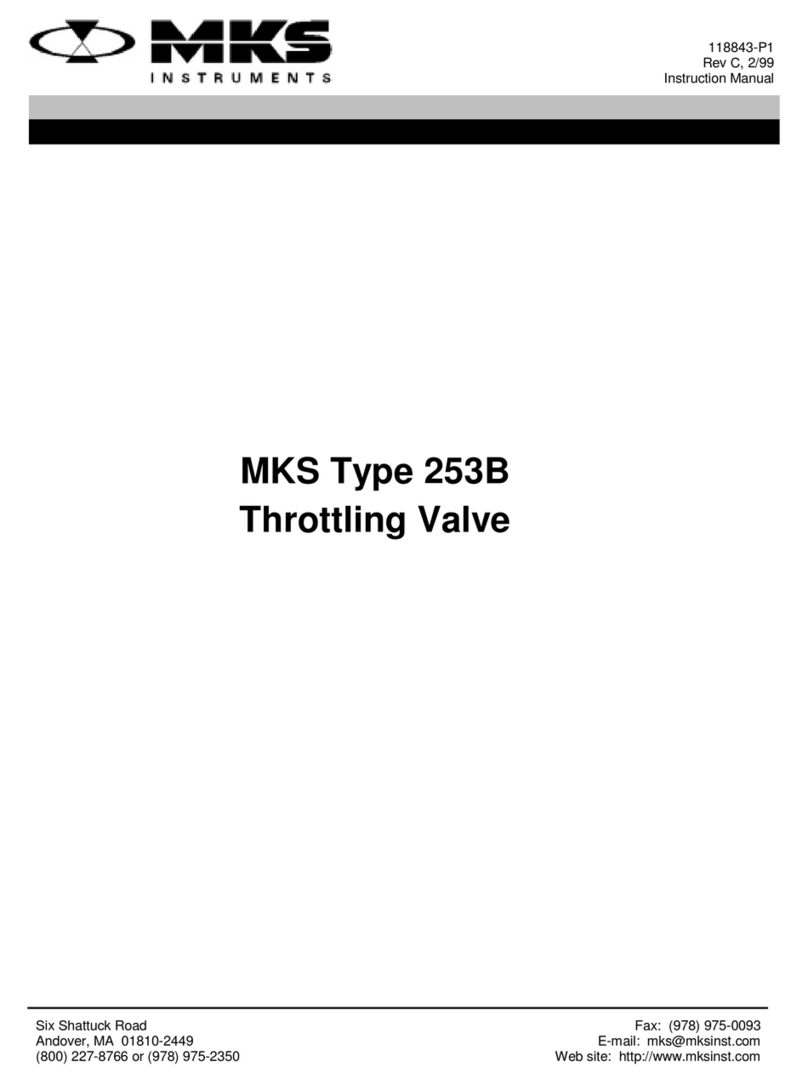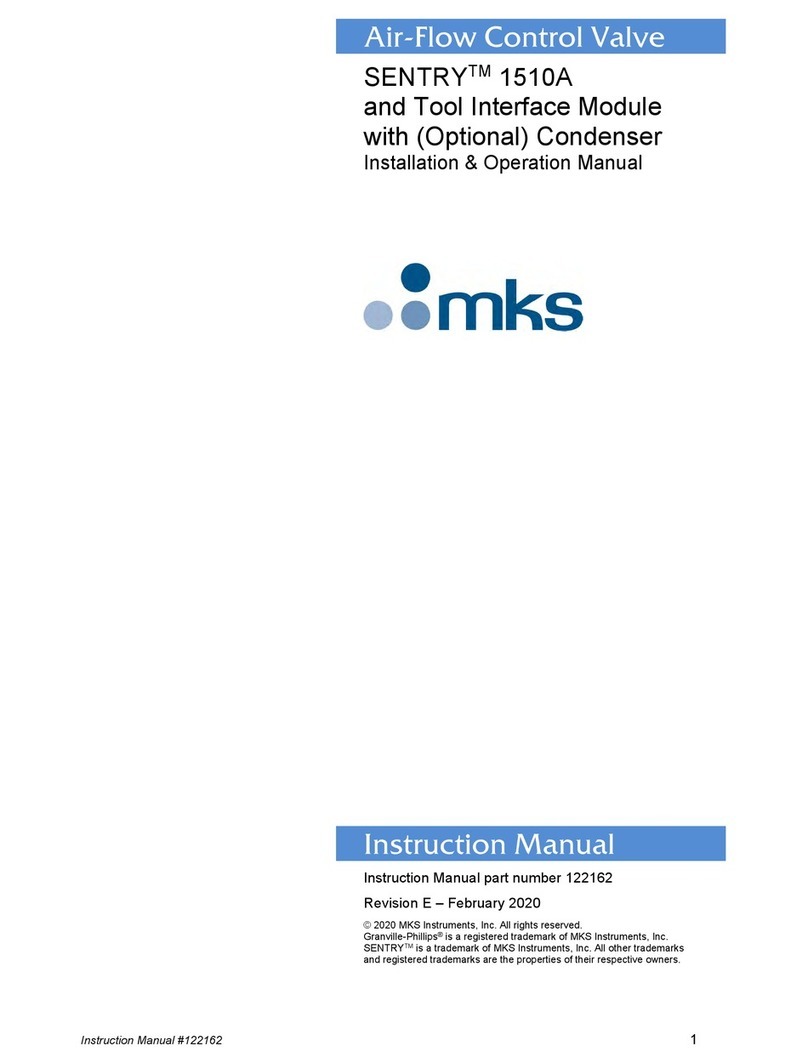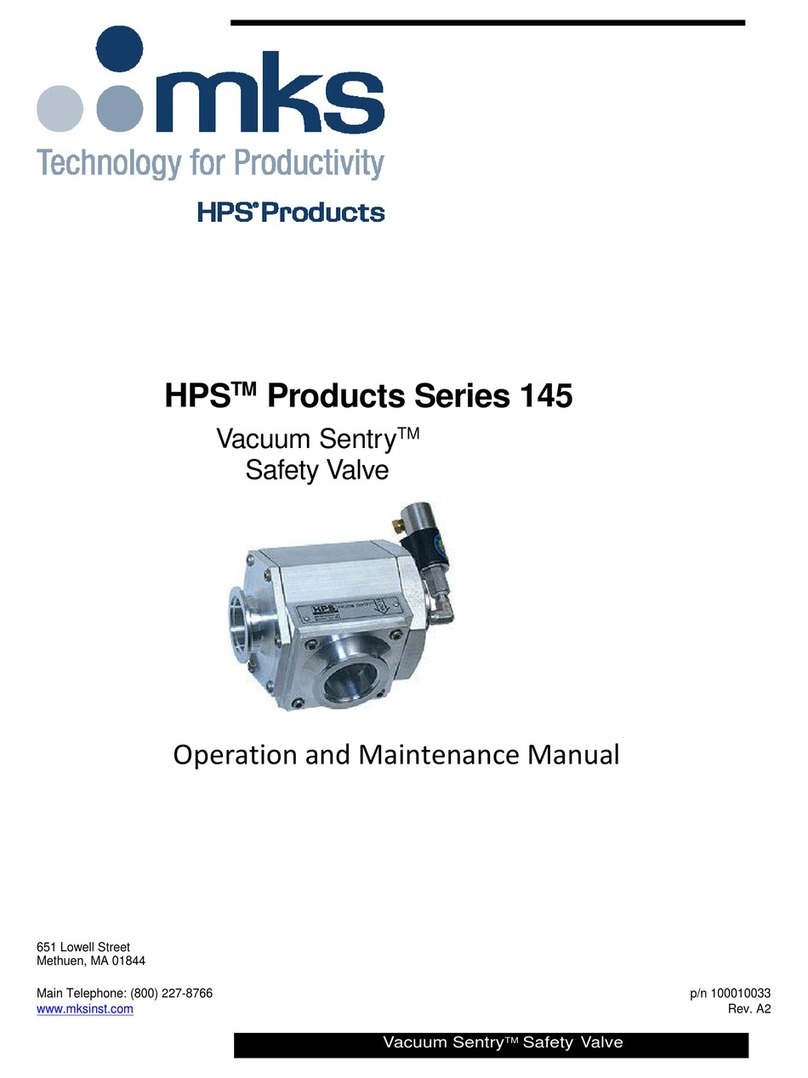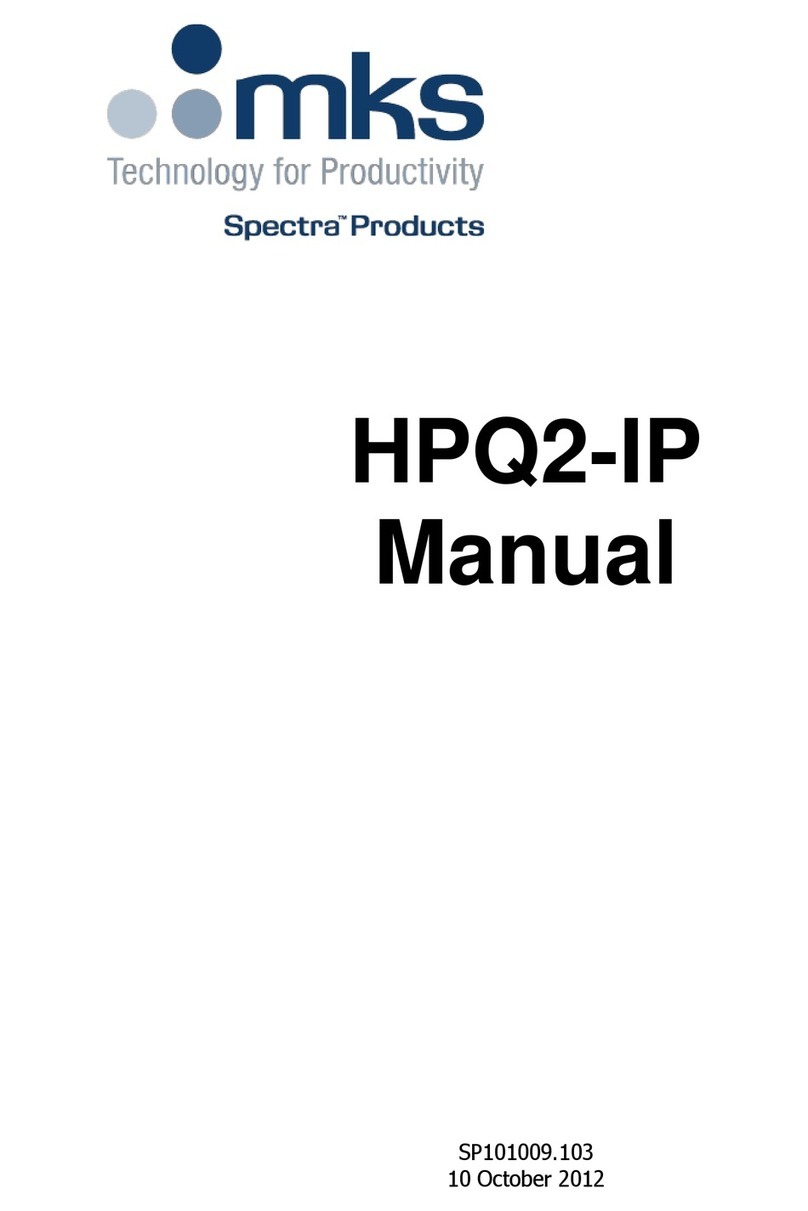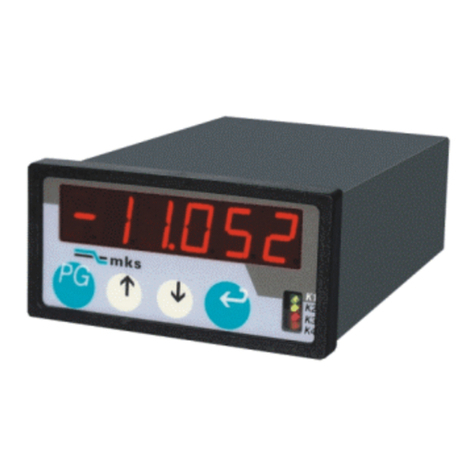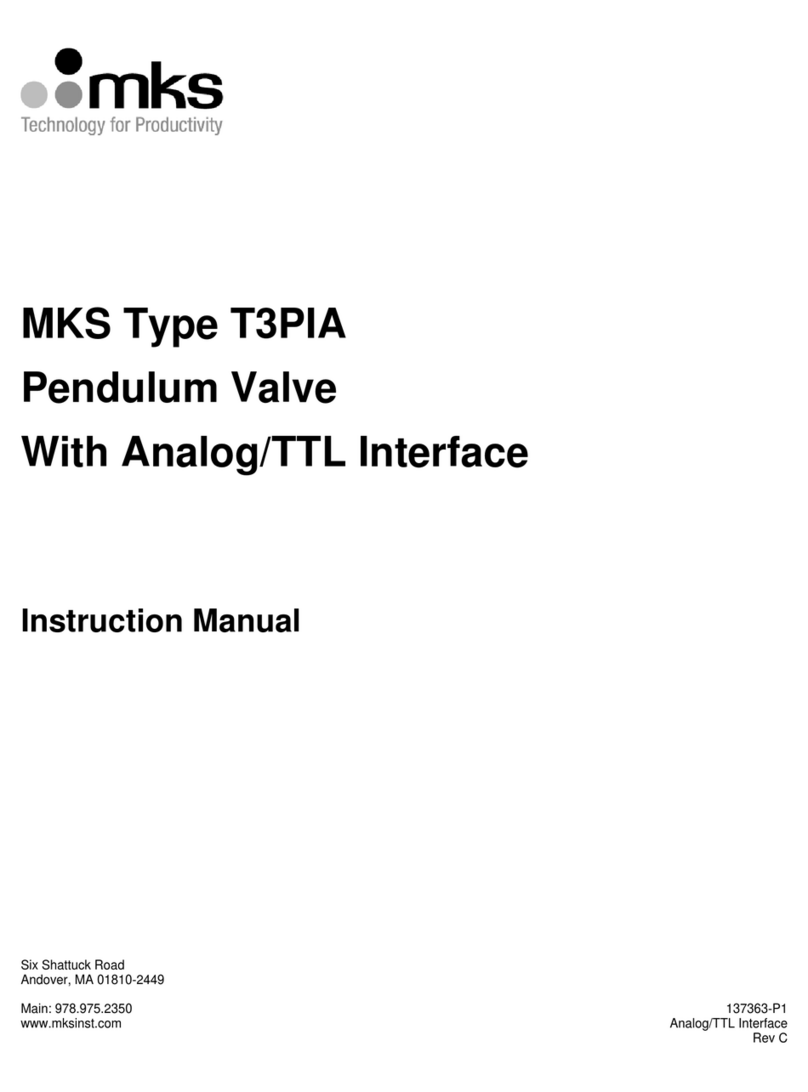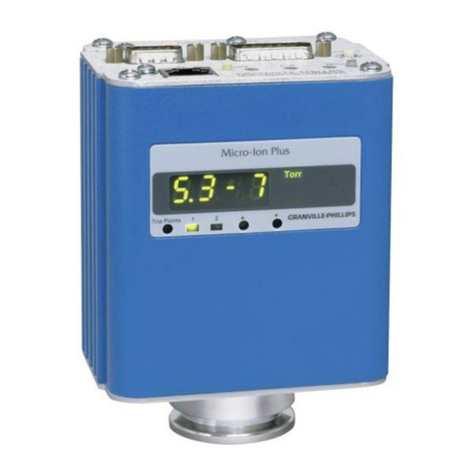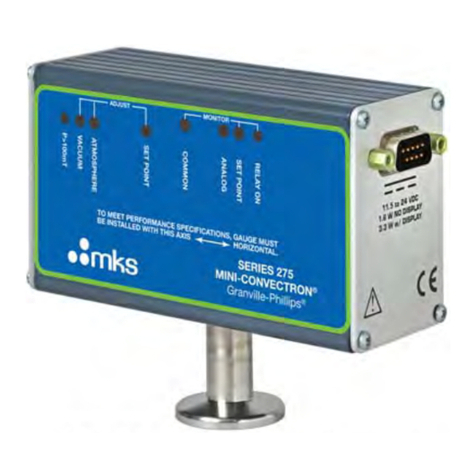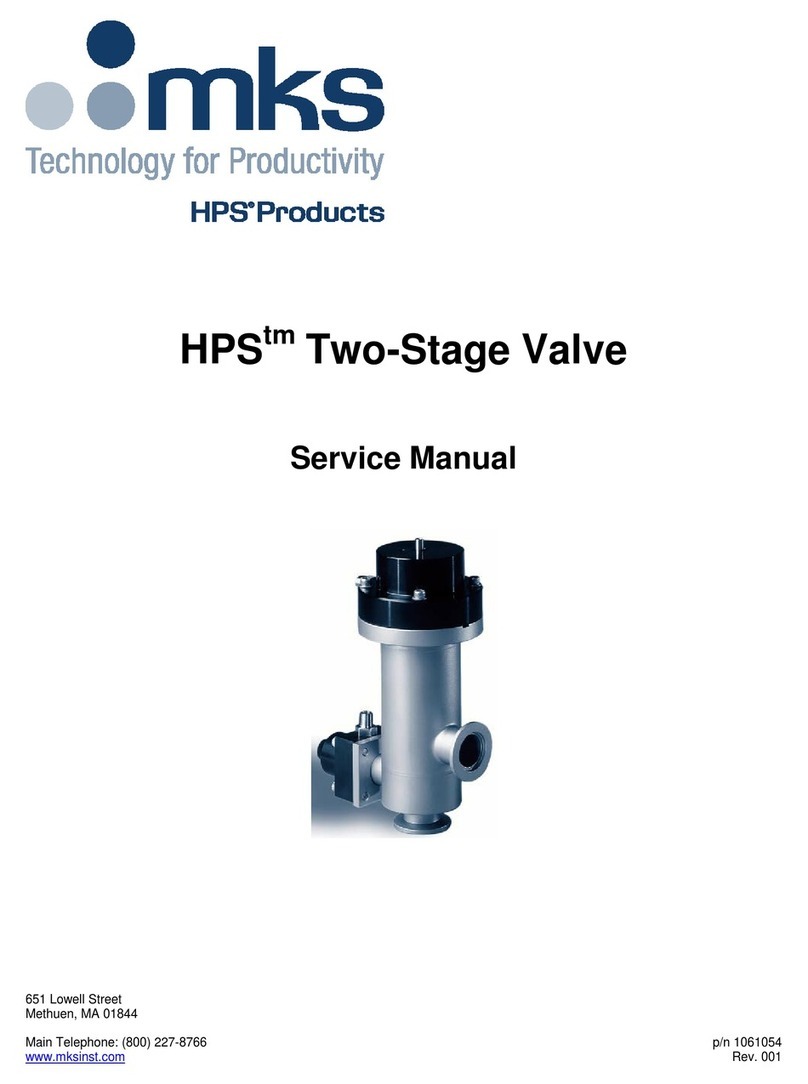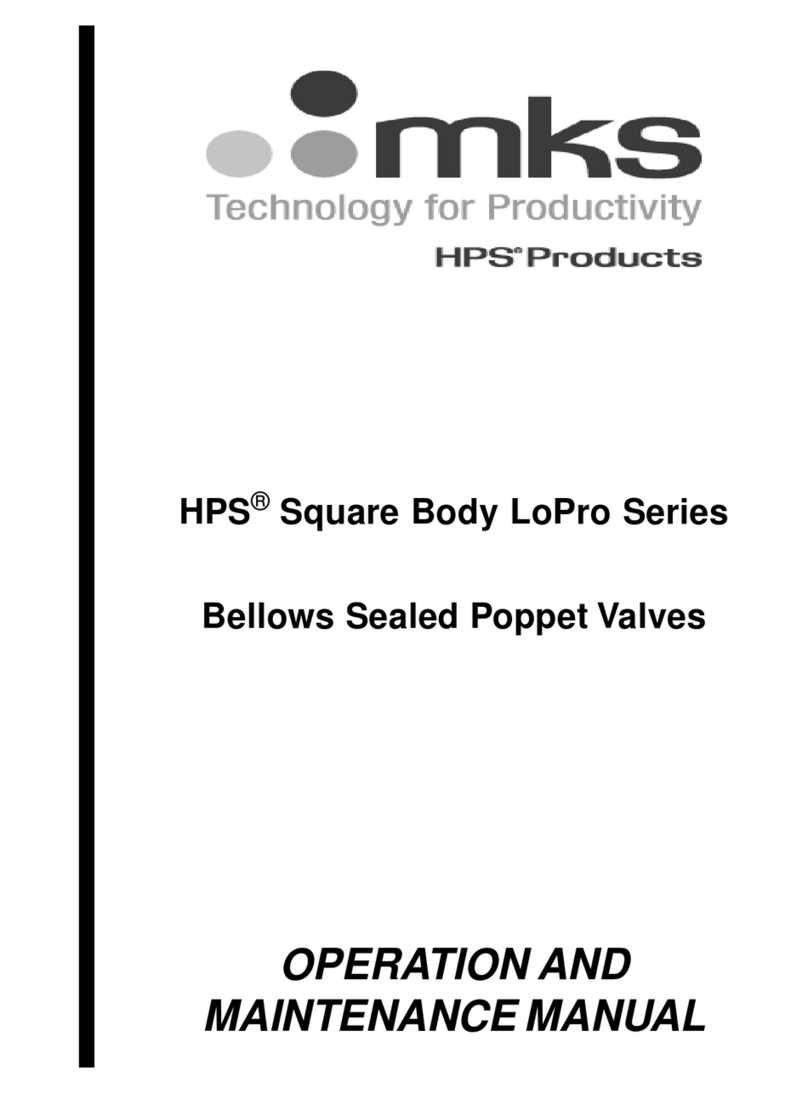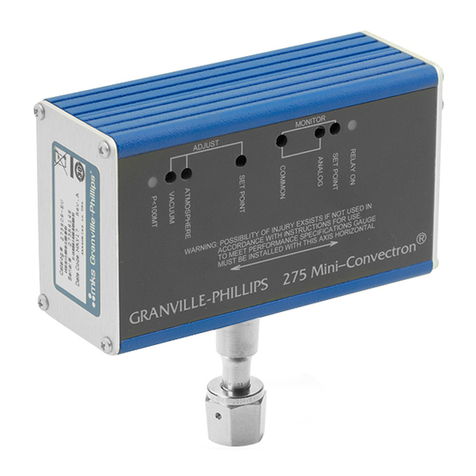This Quick Start Guide is for the following
Series 275 Mini-Convectron Modules:
Figure 1: 20275-636 Mini-Convectron with Non-linear
Analog Output, 2 Process Control
Setpoints with reverse operation on
Relay 1, no Digital Display, Gold-plated
Tungsten Sensor, and NW16KF fitting.
Figure 2: 20275973 Mini-Convectron with Non-linear
Analog Output, 2 Process Control
Setpoints, Digital Display, Platinum
Sensor, and 1/4-inch VCR-type female
fitting.
Figure 3: 20275990 Mini-Convectron with Non-linear
Analog Output, 2 Process Control
Setpoints, Digital Display, Platinum
Sensor, and NW16KF fitting.
General Description
The Series 275 Mini-Convectron Vacuum Gauge Module
is a high precision convection enhanced Pirani-style
gauge and electronics enclosure that measures vacuum
pressures from 1 x 10-4 Torr to 1000 Torr.
Benefits of the design include:
• Compact, convenient, cost saving vacuum
measurement.
• Each gauge is calibrated at the factory which assures
the highest performance.
• Power requirement of only 11.5 Vdc to 26.5 Vdc.
• Replaceable gauge which can easily be replaced
using only a screwdriver.
The nonlinear output signal (Vdc) can be used to as a
pressure reading and sent to other devices in the
process to control process actions.
The adjustable setpoint relays can be used to control
various devices such as safety interlock, valve, digital
input for a scanner, or programmable logic controller.
The setpoint relay trip points can be set to customized
pressure settings to turn power ON or OFF to the
appropriate device.
Intended Use
The intended use of this instrument is to measure
vacuum pressure in the range of 1 x 10-4 Torr to 1000
Torr. This device is to be used only in accordance with
the instructions in this Quick Start Guide and the
Instruction Manual, p/n 275512.
Improper Use
• Removal of any factory installed components
• Modifying any factory installed components
• Removal of any labeling or warranty seals
• Operation of this device in any condensing vapor or
liquid environment
Safety Notices
These safety precautions must be observed during all
phases of installation, operation, and service of this
product. Failure to comply with these precautions or with
specific warnings elsewhere in this instruction guide
violates safety standards of design, manufacture, and
intended use of the instrument. MKS Instruments, Inc./
Granville-Phillips disclaims all liability for the customer's
failure to comply with these requirements.
These instructions do not and cannot provide for every
contingency that may arise in connection with the
installation, operation, or maintenance of this product. If
you require further assistance, please contact MKS,
Granville-Phillips Division at the address given on this
instruction guide.
Safety Notices / Warnings
Figure 4: Safety Symbol on the Mini-Convectron
Module
System Grounding
High Voltage
Installation of the Mini-Convectron
Module on the Vacuum Chamber
Physical Dimensions of the Module
Figure 5: Dimensions of the 20275-636
Mini-Convectron Module
Figure 6: Dimensions of the 20275973
Mini-Convectron Module
Figure 7: Dimensions of the 20275990
Mini-Convectron Module
Install Pressure Relief Devices
Before installing the module, install appropriate pressure
relief devices in the vacuum system.
Granville-Phillips does not supply pressure relief valves
or rupture disks. Suppliers of pressure relief valves and
pressure relief disks can be located via an online search,
and are listed on ThomasNet.com under “Relief Valves”
and “Rupture Discs. Confirm that these safety devices
are properly installed before installing and operating
the Mini-Convectron Module.
Mounting Location
• Locate the Mini-Convectron Module where it can be
easily accessed.
• For greatest accuracy and repeatability, locate the
Mini-Convectron Module in a stable, room-
temperature environment. Ambient temperature
should never exceed 40 °C (104 °F) operating, non-
condensing, or 85 °C (185 °F) non-operating.
• Locate the Mini-Convectron Module away from
internal and external heat sources and in an area
where ambient temperature remains reasonably
constant. Do not mount the Module above other
equipment that generates excessive heat.
• Do not locate the Mini-Convectron Module directly
below the chamber which may allow sputtering
particles or other contamination to fall into the gauge.
• Do not locate the Mini-Convectron Module near the
pump, where gauge pressure might be lower than
system vacuum pressure.
• Do not locate the Mini-Convectron Module near a gas
inlet or other source of contamination.
• Do not locate the Mini-Convectron Module where it
will be exposed to corrosive gases such as mercury
vapor or fluorine.
• Do not locate the module where it will vibrate.
Vibration causes convection cooling, resulting in
inaccurate high pressure readings.
Mounting Orientation
For proper operation of the module above 1 Torr, orient
the module so the axis is horizontal. Although the
Convectron gauge will read correctly below 1 Torr with
the module mounted in any position, inaccurate readings
will result at pressures above 1 Torr if the module axis is
not horizontal.
Figure 8: Recommended Mounting Orientations
Attach the Mini-Convectron Module to the
Vacuum Chamber
Connect the Mini-Convectron Module to the vacuum
system flange using the appropriate gasket and
mounting hardware.
For a VCR-type fitting:
1. Remove the plastic or metal bead protector cap from
the fitting.
2. If a gasket is used, place the gasket into the female
nut.
3. Assemble the components and tighten them to
finger-tight.
4. While holding a back-up wrench stationary, tighten
the female nut 1/8 turn past finger-tight on 316
stainless steel or nickel gaskets, or 1/4 turn past
finger-tight on copper or aluminum gaskets.
For an NW16KF flange:
The KF mounting system requires O-rings and centering
rings between mating flanges.
1. Tighten the clamp to compress the mating flanges
together.
2. Seal the O-ring.
Electrical Connections and Power
Requirements
The cable is user-supplied. Granville-Phillips does not
supply the cable. Install externally shielded cable and
connect the shield to ground.
At the module end of the cable, connect the shield to the
outer shell of the subminiature D connector.
Connect 11.5 to 26.5 Vdc power supply to terminals 3
and 4.
• Terminal 3 (input) is positive (+).
• Terminal 4 (ground) is negative (–).
See the Grounding Requirements and Specifications in
this document.
Figure 9: 15-Pin Connector for Modules with 2
Setpoint Relays
Grounding Requirements
If the gauge has a ConFlat-type flange, the module will
be properly grounded via the vacuum chamber
connection.
If the gauge has an NW16KF flange, check continuity
between the gauge and the vacuum chamber.
If the fitting requires a rubber gasket, rubber O-ring,
Teflon tape, or other material that prevents metal-to-
metal contact between the housing base and the vacuum
chamber, attach a ground connection as illustrated in
Figure 10.
1. Attach a metal hose clamp or other metal clamp to
the gauge stem of the housing.
2. Install a 3.31 mm2(12 AWG) or larger copper wire
between the clamp and a metal ground lug, bolt, or
stud on the vacuum chamber.
Figure 10: Ground Connection
Operation
It is important to understand that the pressure indicated
by a Convectron Gauge depends on the type of gas, the
orientation of the gauge axis, and on the gas density in
the gauge. Convectron Gauges are normally factory
calibrated for N2(air has approximately the same
calibration). With proper precautions, the Convectron
Gauge may be used for pressure measurement of
certain other gases.
At pressures below a few Torr, there is no danger in
measuring pressure of gases other than N2and air,
merely inaccurate readings. A danger arises if the N2
calibration is used without correction to measure higher
pressure levels of some other gases. For example, N2at
24 Torr causes the same heat loss from the Convectron
sensor as argon will at atmospheric pressure. If the
pressure indication of the Convectron Gauge is not
properly corrected for argon, an operator attempting to fill
a vacuum system with 1/2 atmosphere of argon would
observe a pressure reading of only 12 Torr when the
actual pressure had risen to the desired 380 Torr.
Continuing to fill the system with argon to 760 Torr would
result in a 24 Torr pressure reading.
Depending on the pressure of the argon gas source, the
chamber could be dangerously pressurized while the
display continued to read about 30 Torr of N2equivalent
pressure.
This type of danger is not unique to the Convectron
Gauge and likely exists with other thermal conductivity
gauges using convection to extend the range to high
pressures.
To measure the pressure of gases other than air or N2
with a Convectron Gauge calibrated for N2, you must use
the conversion curves listed specifically for Convectron
Gauges to translate between indicated pressure and true
pressure. Do not use other data. Never use the
conversion curves designed for Convectron Gauges to
translate pressure readings for gauges made by other
manufacturers. Their geometry is very likely different and
dangerously high pressures may be produced even at
relatively low pressure indications.
Ensure that the atmosphere adjustments for the
Convectron Gauge are correctly set.
Use the following graphs to determine the indicated N2or
air pressure that corresponds to a specific true pressure
of 10 other commonly used process gases. Find the
point at which the horizontal line representing true
pressure intercepts the vertical line representing
indicated N2pressure. If the gas being used is not
included among those listed, or for a gas mixture,
generate a calibration curve using a gas-independent
transfer standard such as a capacitance manometer.
More thorough information is given in the Instruction
Manual, p/n 275512, which can be downloaded at:
www.mksinst.com.
